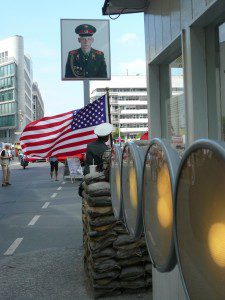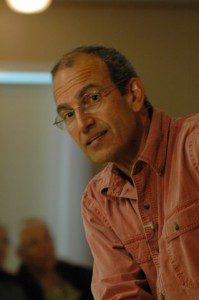
During a college class the other day, I wanted to give my broadcasting students a sense of the power of television as tool of influence in the 20th century. I chose something in their lifetime – the fall of the Berlin Wall – in 1989. That’s when the Western media began covering the activities of dissidents in East Germany, I said. And that sparked the popular uprising that pressured the Communist regime to open crossing points at the Wall. To make sure my students understood the context, I asked if everybody knew the basis of the Cold War.
“Was Canada involved?” one of my students asked.
“Of course,” I said.
But to make sure I hadn’t under- or over-estimated the intelligence of my audience, I asked how much Canadian and world history the class had studied in elementary and high school. A few said they had learned about Confederation and Sir John A. Macdonald and a few more said they’d learned a bit about Canada in the two World Wars. But that was all.
I thought I’d check myself. According to Ontario Ministry of Education documents, students take “Canadian history since World War I” in Grade 10. (For the record, “World War I” is an American term; in Canada it’s known as “the First World War.”)
More important, in such a course would a student learn about a typical regiment, such as Uxbridge’s own 116th Battalion or about its commander Col. Sam Sharpe? Would a Grade 10 student learn that communities right across Canada had contributed to all the services in the Second World War and have continued to offer volunteers in peacekeeping operations from Somalia to Rwanda, and NATO actions from Bosnia to Afghanistan?
“Academic courses develop students’ knowledge and skills through the study of theory and abstract problems,” the Ministry document further stated.
Ouch. If that’s the way educators at Queen’s Park design Canadian history, it’s no wonder my college classroom seemed so ill-informed. To illustrate the apparent disconnect between educators and pupils when it comes to Canadian history even further, this week I attended the 10th anniversary reception of the Memory Project. That’s the extraordinarily successful outreach program, that has sent Second World War and Korean War veterans into elementary and high school classrooms across Ontario to share memories and answer students’ questions. A program that began with about a dozen volunteer vets in 2001, today sees about 1,500 veterans visiting up to 200,000 students a year.
“Vets make history come alive,” said Jeremy Diamond, national program director at Historica-Dominion Institute, at the anniversary party.
That’s only the half of it. When Charles Scott-Brown, one of the longest serving classroom-visiting vets, was asked to speak the other night, he didn’t mince words. He reminded those at the celebration why the vets began to talk to Ontario school kids 10 years ago. He recalled the three-part docu-drama “The Valour and the Horror,” produced by Brian and Terence McKenna for CBC Television in 1992. The series painted a negative portrait of three famous Canadian contributions in the Second World War – Hong Kong, Bomber Command and Normandy.
“They picked the three worst days, one from each service,” Scott-Brown contended. “(But) young people wanted us, the vets, to speak.”
Indeed they did. Since 2001 when the Memory Project began, former servicemen and women, who overcame much self-doubt and anxiety about exposing their emotions and taking on tough questions, have visited about 1.5 million students in Ontario classrooms. And, for the record, I too contributed to those visits right from the beginning.

Then just called the Dominion Institute, the organization invited me to join day-long sessions during which I tried to explain to veterans why their presence was needed in Ontario schools. I spoke to vets in Toronto, London, Ottawa, North Bay and everywhere in between. I hoped I could convince them that breaking their silence about wartime experience would honour their lost comrades and give Canadian service in uniform a tangible voice and face. Indeed, as the speeches at Monday night’s 10th anniversary reception concluded, I offered a challenge to those planning the next decade of Memory Project work.
“I think the mandate of the next 10 years should be establishing curriculum,” I said.
I pointed out in the first decade, that veterans in Ontario had offered their time for nothing and at the risk of painful memory. I insisted that none of us could fully repay them for that gift. But I quickly pointed out that it was time to take that initial step translate it into a movement among educators and education policy planners to make such history mandatory in Canadian schools.
I suggested that I never again wanted to face a college classroom where young adults could not recount an historic Canadian peacetime or wartime moment or at least one memory of a man or woman who’d witnessed it.
A documentary is fine, but to really reinforce concept, go visit a Commenwealth Grave site. Or go to a Vimy Ridge, or Juno Beach or any other battle memorial. That will have an impact, and they will remember. Plus, they will want to read more about it. The way history is taught in school doesn’t invite you to learn.